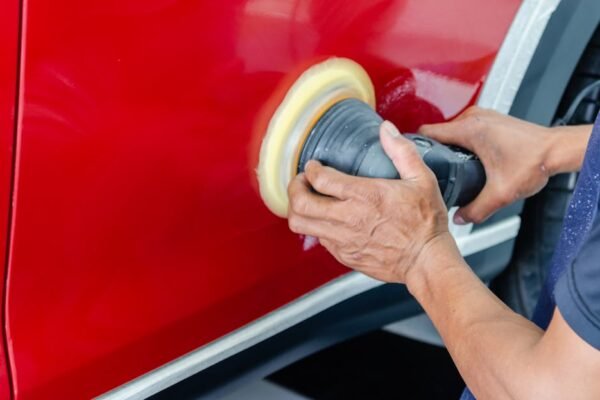Introduction to Driver-Assistance Systems
{“type”:”img1″,”src”:”https://mostmotors.com/wp-content/uploads/2024/03/fileUpload-28.jpg”,”alt”:”modern car technology”}Advanced driver-assistance systems (ADAS) have revolutionized the way we interact with our vehicles, offering an added layer of safety and comfort. Retrofitting your car with these systems may seem daunting, but with the right knowledge and tools, it's a task that can significantly enhance your driving experience. Whether you're looking to add adaptive cruise control, lane-keeping assist, or collision avoidance, this guide will walk you through the essentials of upgrading your ride.
Understanding the components and functionality of ADAS is the first step toward a successful retrofit. These systems rely on a combination of sensors, cameras, and radar technology to monitor road conditions and vehicle performance. By integrating these elements, ADAS can make split-second decisions to help prevent accidents and improve driver comfort.
Before embarking on your retrofitting journey, it's crucial to assess which systems are compatible with your vehicle. Not all cars are equipped to support every type of ADAS technology. Conducting thorough research and consulting with automotive experts can save you time and resources in the long run.
Moreover, familiarizing yourself with the legalities and insurance implications of retrofitting ADAS is essential. In some regions, modifications to a vehicle's original specifications can affect its insurance status. Therefore, ensuring that your retrofit complies with local regulations will help in maintaining the legality of your vehicle.
Lastly, setting a clear budget for your retrofit project will guide you in choosing the components that offer the best value for your investment. Quality should not be compromised, as the primary goal of ADAS is to enhance safety.
Choosing the Right Systems for Your Car
Deciding which ADAS features to add to your vehicle requires a balance between needs, compatibility, and budget. Popular systems like adaptive cruise control are highly sought after for their ability to adjust vehicle speed based on traffic conditions. Likewise, lane-keeping assist and automated parking aids significantly reduce the effort required during long drives and tight parking situations.
Each ADAS feature comes with its own set of requirements. For example, retrofitting a car with a collision avoidance system may necessitate the installation of advanced cameras and radar units around the vehicle. Understanding these requirements is key to planning a successful upgrade.
It's also worth considering the integration of these systems with your car's existing features. Some ADAS technologies can be seamlessly integrated, while others may require additional modifications to ensure compatibility. Working with a professional installer can help in identifying the best approach for your car.
The evolution of ADAS technology is rapid, and keeping updated with the latest advancements can provide additional options for your retrofit. Manufacturers frequently release updates and new systems that can offer improved performance and safety features.
Finally, prioritizing the installation of certain ADAS components over others can help in managing your budget effectively. Starting with systems that offer the most immediate benefits in terms of safety and convenience is a practical approach to retrofitting your vehicle.
Installation Considerations
{“type”:”img1″,”src”:”https://mostmotors.com/wp-content/uploads/2024/03/fileUpload-29.jpg”,”alt”:”car mechanic tools”}Successfully retrofitting your car with ADAS requires careful planning and execution. The installation process varies significantly depending on the systems you've chosen. Some modifications can be straightforward, while others might involve complex wiring and programming.
One of the critical steps in the installation process is calibrating the systems to work correctly with your vehicle's specifications. Calibration ensures that sensors and cameras are accurately aligned, enabling the ADAS to function as intended. This process often requires specialized equipment and technical expertise.
Another consideration is the impact of retrofitting on your car's warranty. In some cases, aftermarket modifications can void the manufacturer's warranty. It's essential to check the terms of your warranty and decide whether the benefits of adding ADAS outweigh the potential risks.
Ensuring that all installed systems are tested thoroughly before use is crucial for safety. This includes verifying the functionality of sensors and cameras under various driving conditions. Professional installers typically conduct these tests as part of the installation service.
Lastly, educating yourself on how to use the new ADAS features is important. Familiarizing yourself with the functionality and limitations of each system will help you make the most out of your retrofit and drive safely.
Maintenance and Troubleshooting
Like any aspect of your vehicle, ADAS requires regular maintenance to operate effectively. Keeping sensors and cameras clean and free of obstructions is essential for accurate performance. Moreover, staying up-to-date with software updates and recalls can prevent potential malfunctions.
Encountering issues with retrofitted ADAS can be frustrating. However, many problems can be resolved with simple troubleshooting steps. For instance, misalignment of sensors is a common issue that can affect system accuracy. Re-calibration by a professional can quickly remedy this problem.
For more complex issues, consulting with the installer or a specialized technician is advisable. They can provide expert diagnostics and repairs to ensure your ADAS continues to operate efficiently.
Additionally, joining online forums and communities can be a valuable resource for information and support. Sharing experiences and solutions with other car owners who have undergone similar retrofit projects can offer practical insights and advice.
Ultimately, the goal of maintaining your retrofitted ADAS is to ensure long-term reliability and safety. Regular checks and professional servicing can prevent the majority of issues, allowing you to enjoy the benefits of advanced driver-assistance systems with peace of mind.
Conclusion
Retrofitting your car with advanced driver-assistance systems is a worthwhile endeavor that can greatly enhance your driving experience. By carefully selecting the right systems, planning the installation process, and committing to regular maintenance, you can enjoy the benefits of added safety and convenience.
While the retrofit process can be complex, the rewards in terms of increased security and comfort on the road are substantial. Embracing the advancements in automotive technology by upgrading your car with ADAS is a forward-thinking choice that prioritizes safety and efficiency.
As driver-assistance technologies continue to evolve, the potential for further enhancements to your vehicle remains vast. Staying informed about new developments and considering future upgrades can keep your car at the forefront of automotive innovation.
By following the guidelines and considerations outlined in this guide, you're well on your way to successfully retrofitting your vehicle with the latest in driver-assistance technology. Safe and enhanced driving awaits!





